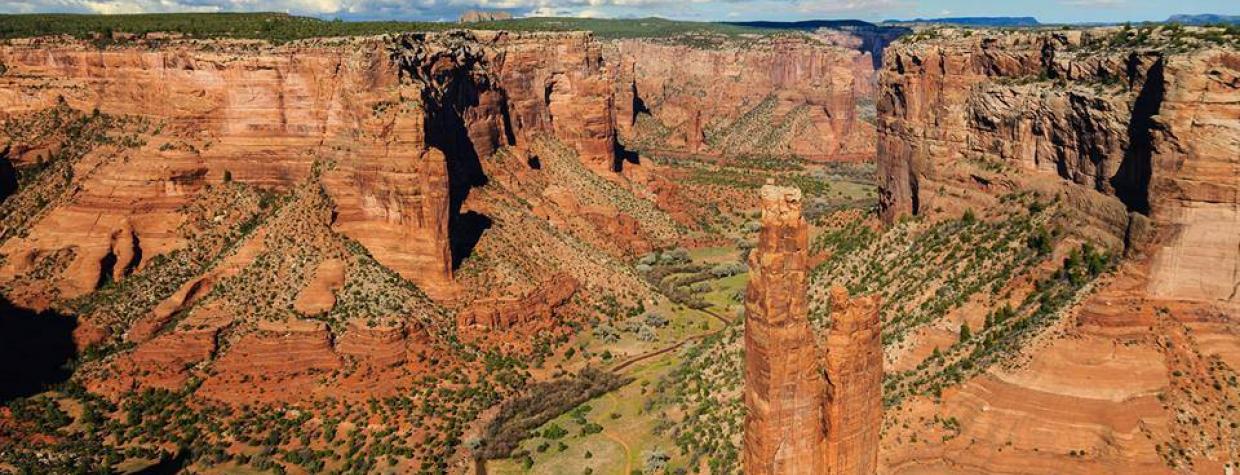In our October issue, we featured Canyon de Chelly National Monument on the Navajo Nation. That canyon's best-known feature is Spider Rock, a sandstone spire that rises more than 700 feet from the floor of the canyon. It's named for Spider Woman, a key figure in Navajo lore. And it was what prompted Bob Klages, a reader from Oxford, Michigan, to write to us. (It actually was the second time this year that Bob has asked a great question; the first was about Petrified Forest National Park's logs.)
"How does nature carve away all the rock around a spire like Spider Rock, leaving 700 feet of such a skinny needle formation like that?" he asked. We didn't have an answer, and as it turned out, neither did the monument's staff. So we contacted Harold "Hal" Pranger, chief of the Geologic Systems Branch of the National Park Service's Geologic Resources Division.
Spider Rock, Pranger says, is the last remnant of stream and hillslope erosion process that continue to make the canyons deeper and wider. He writes in an email: "Spider Rock at one time (many thousands to perhaps even hundreds of thousands of years) was connected to the ridge between the main Canyon de Chelly and Monument Canyon. The hillslope and stream erosion processes worked at different rates along that ridge, obviously at a slower rate right at Spider Rock. The differential erosion left this tower that is now called Spider Rock behind."
Eventually, Pranger adds, Spider Rock will topple, as have other rock monoliths in the national monument. For now, though — and likely for centuries to come — it's a highlight of any visit to Canyon de Chelly.
If you'd like more information about the monument's geology, you can check out a report the Park Service produced in 2007.

